Survival Stories
Gator Attack Survivor’s Harrowing Tale of Survival and Redemption
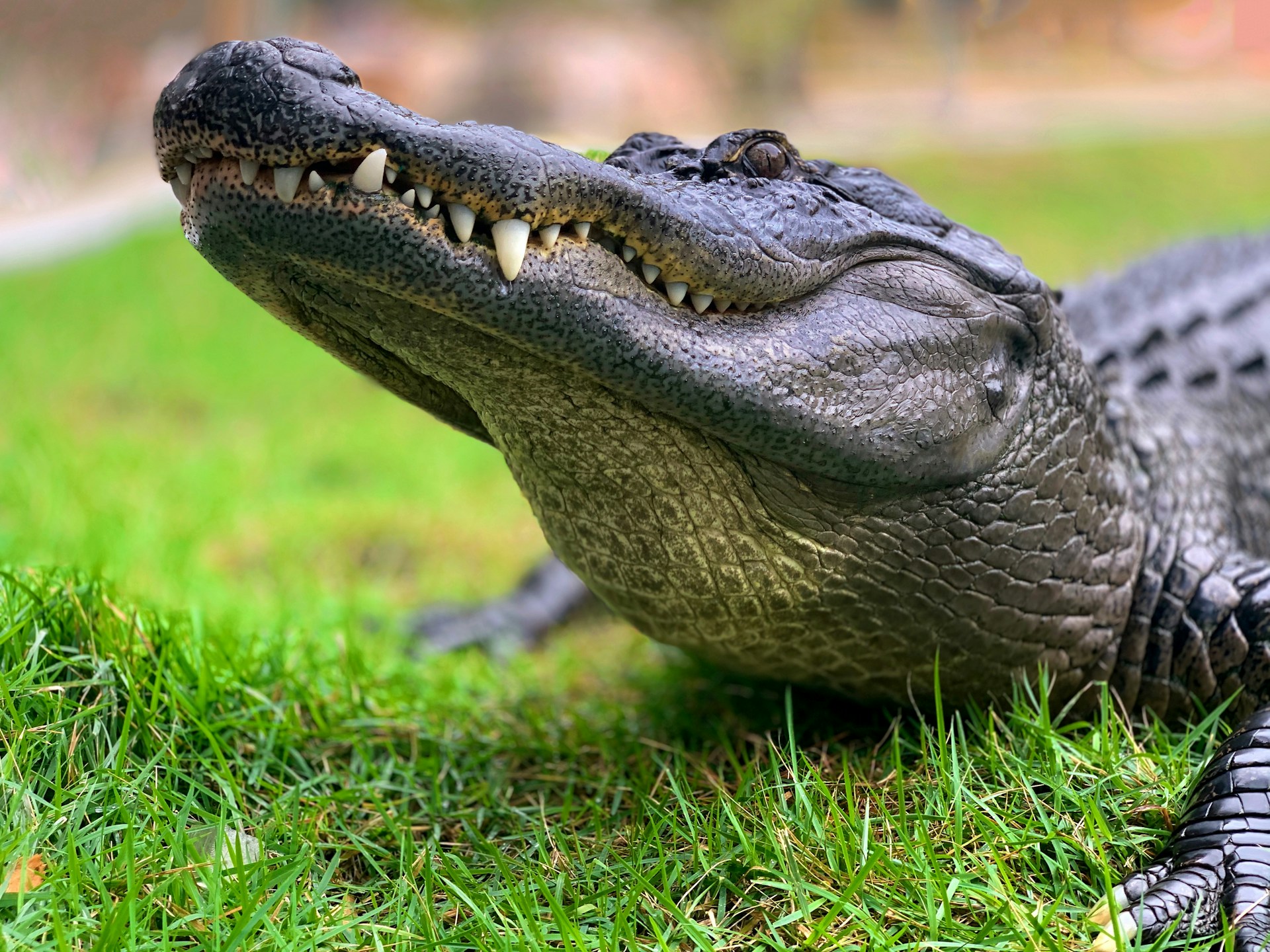
Under the brilliant stars over Lake Manatee, a man found himself backstroking through the dark water. Exhausted and frustrated by his lack of progress, he was determined to swim all night if he had to. Suddenly, a chilling intuition crept upon him. He sat up in the water and looked to his left. Just two feet away, the unmistakable shape of an alligator’s snout lurked, its slitted eye glowing yellow in the starlight. Before he could react, the gator struck, seizing his right forearm in its teeth. The predator twisted its powerful body, snapping the man’s arm back at the elbow. For a moment, the world went black, as if lightning had struck inside his head. Then, still firmly holding its prey, the reptile dove, intending to drown its victim in the silent midnight depths of the lake.
Eric Merda, a 43-year-old father of seven, had been on a sort of ascetic quest for the past two weeks. He had always had his struggles—addiction, street fights, run-ins with the law—but things had recently become clear. He’d come to accept that his relationship with the mother of five of his children was over. He’d also begun to realize he was running with a dangerous crowd. Intelligent, creative, and spiritual, Merda knew he’d been on the wrong track. He believed God was telling him to clean up his act and live up to his gifts.
Merda spent his days laboring under the Florida sun, installing and repairing sprinkler systems, a job he’d done for 25 years. By evening, he’d wander and explore. For the first time, he had no woman or children to go home to. He spent much of his surplus time on Siesta Key Beach, where he gave himself daring challenges. He often slept unsheltered on the sand of Siesta Key. One morning he awoke to see litter scattered along the beach, and felt God telling him that he ought to clean it up. He began collecting trash. It felt good, so he made a habit of picking up litter wherever he saw it, not just on the beach. It became a kind of compulsion.
On Monday, July 18, 2022, he had a job in the rural parts of Manatee County. He finished by late afternoon and decided to explore. He spotted a dirt road with a sign that read Lake Manatee Fish Camp. He drove his old white work van down into the area, past a little country store and some folks pitching horseshoes, and followed the road. It ended at a boat ramp onto Lake Manatee, a man-made reservoir covering about four square miles, surrounded by wild swampland. Trash lay strewn along the roadside. Merda jumped out of his van, leaving his phone and keys inside, and started collecting the garbage into piles.
After a while, he decided to explore the woods. He ran off into the trees with the abandon of a schoolboy. Before long, he encountered a seemingly impenetrable thicket of brush, thorns, and vines. He charged into it and battled for many long minutes. It was exhausting, but he pushed on. When he finally emerged into a grove of scrawny orange trees, he was sweaty, cut up, and tired. He had no idea where he was in relation to the lake. He’d been pushing through the thicket for hours, and now all he wanted was to get back to his van and go home.
He spent another couple of hours wandering among the orange trees, which were laid out in an endless grid. No sign of civilization. The lake and his van certainly weren’t out here in an orange grove, so he reentered the woods and soon found himself mucking around in swamp water. There seemed no way out of this bog. He labored for hours as the sun sank. Tall, thick grasses and thorns clogged his way; mud and water filled his boots. His feet hurt so badly that he took his boots off and carried them—but the twigs and brambles lacerated his soles, so he stopped and pulled the boots back on. He tried to navigate by the sun but kept losing it. Each time he picked out a landmark or chose a beeline course, he became hopelessly lost again after just a few minutes.
Darkness was falling when at last he reemerged onto the shore of the lake. There across the water stood the boat launch, now empty, and a little highway bridge, less than a quarter-mile away as the crow flies—or as the duck swims. He was beaten, sore, and thirsty. Reenter the swamp? Out of the question. Who knew where he’d end up? He’d have to swim for it across the lake.
The water was surprisingly cold, especially as it deepened. He started out paddling strongly for the opposite bank, drinking lake water to quench his awful thirst. After a few minutes he realized he’d never make it with his clothes on. He shed every stitch, letting his work clothes sink to the bottom of the dark lake.
He swam on, but some strange current prevented his progress. He was a good swimmer, yet he somehow kept diverging from his goal. He’d point himself at the boat launch, swim a few strokes, lift his head and find that he was way off course. It was maddening, but he refused to surrender to emotion. In a fistfight, the guy who comes into it panicking, with no self-control, he’s the one who gets whooped. The sun disappeared and the stars came out, and still he struggled, alternating between a backstroke and a crawl.
And that’s when he saw the alligator. Before he could swim a stroke, before he could save himself, before he could let out a scream, the creature struck like a snake. It sank its teeth into Merda’s forearm, breaking it at the elbow, and dragged him underwater.
Merda went into fight mode. He flung his other arm around the gator’s middle, clutching at its heaving belly as he kicked his feet to keep from going to the bottom. Man and beast resurfaced and Merda gulped air—but just as quickly the gator yanked him under again. The third time, the alligator did what alligators do: It barrel-rolled its entire body in a vicious coup de grâce, and Merda felt the flesh of his arm tearing away as the limb was severed. The creature disappeared into the darkness, carrying Merda’s forearm with it.
No pain yet, only terror. His one thought was to get out of the water. He swam furiously, paddling with the stump, and came to rest at the lake’s edge not far from where he had entered. He paused for a time, heaving, in the partially submerged grasses. Nearby stood an enormous tree on drier ground. He dragged himself over to it and stood screaming for help across the desolate lake.
Then he realized, I’m the only one who can get myself out of this. Just like I’m the only one who can fix every other part of my life. He posted up next to the trunk of the tree and waited for dawn.
When the pain arrived, it was exquisite.
In the morning, he spotted two airplanes. Each time, he climbed up the tree and waved and hollered, which did him no good. He was stark naked in the wilderness, bereft of his right forearm and with nothing to use for a signal. Again, he started pushing through the tall grasses and immediately became lost anew, wandering in circles. He decided the best course was to reenter the water and wade the lake’s edge, following its quarter-mile curve until it reached the boat launch.
But that proved nearly impossible too. Submerged logs, tall grasses, saw grasses, overhanging brush, and sudden drop-offs stymied his progress. He howled in pain when he blundered into a stick that poked into the exposed muscle of his right arm. Chest-deep in the murky water, he looked behind him, and there, 100 feet away, stared the bumpy eyes of the alligator—or an alligator, anyway—silently following him. He moved to shallower water and the gator eyes sank beneath the surface. All through the long day, as he struggled along, the creature dogged him. Maddeningly, thanks to the meandering shoreline, the boat launch appeared farther away than ever.
As night fell, he happened upon a concrete structure at the lake’s edge, no doubt part of the reservoir system. Hungry, thirsty, and in agony, he haltingly climbed onto it, stretched out, and slept. He awoke in darkness with the horrifying awareness that he was only a couple of feet above the swamp water with his left arm dangling off the structure like a second proffered morsel. That was enough. He wanted out of the swamp. He wanted dry land.
Up till then, Merda had been ambivalent about life and death. Now he could hear God telling him, “All right. After this, I don’t want to hear any more. If you choose to die, you choose to die. If you choose to live, then good luck to you, because it’s not going to be easy.” He’d always figured his concept of God would get him kicked out of most churches: By his philosophy, since we’re all made in God’s image, God is part of each of us, and each of us is part of God. Thus, to have faith in God is to have faith in oneself, and to quarrel with God is to quarrel with oneself. And he was done quarreling with himself.
In the dark, he blundered his way through an eternity of 10-foot-tall grasses whose roots lay beneath knee-deep water. Disoriented again. The sun dawned on a new day, his third out here, and before long the Florida heat set the swampland to broiling. Green horseflies swarmed his injury where the naked muscle twitched and the bare bone gleamed. The land was so soggy that even when he wasn’t standing in water, he could scoop at the earth with his good hand and a little puddle of filthy drinking water would fill the depression he’d made. He nibbled at some tiny purple flowers growing throughout the swamplands.
He began to fade, utterly spent and bloodied. But he’d made his decision. He’d chosen life, even if it meant the pain and frustration of endless struggle. Whenever his fatigue overwhelmed him, he pushed over the tall grasses to make a mat on which to sleep.
His quest was dry land, and at last he found it—only to discover it overwhelmingly choked with thorny vines. It was either the swamp or this endless wall of thorns—no getting around it, over it, or under it. He must push through. It’s just a little pain, he told himself. You aren’t even going to remember it once it’s gone. So he dragged himself into the bramble, crab-walking at times, getting sliced and punctured, pausing periodically to psych himself up for more pain.
In late afternoon, he came across a brown quart beer bottle lying in the mud like a signal from civilization. He knew now that he was saved. How far can somebody throw a beer bottle—40 feet? That meant just 40 feet to the road. You can go another 40 feet.
He did, and when he exited the thorns he found that he was staggering alongside the road near the turnaround spot for the boat launch. On the other side of a wire fence, a man stood beside a red car.
The man goggled at the stranger, naked save for the blood and mud that covered his body. “What are you doing back there?” he said.
“A gator got me!” Merda answered, waving his stump. “You got any water?”
“Holy … ! I don’t have any water, but I’ll get you some, for sure.”
The fence was the final obstacle between him and civilization. Merda had had enough. He lay down in the weeds on the swamp side of the divider and waited for the EMTs, who would cut the fence wire and carry him over to the helicopter that would whisk him away to the rest of his life.
Merda spent nearly three weeks in a Sarasota hospital. His wound had become infected in the swamp, so surgeons removed considerably more than the alligator had taken, leaving him with only about six inches of arm past the shoulder. It’s incredible that he didn’t bleed to death—but, by some miracle, he says, the wound barely bled.
He ate like a machine in the hospital, and sent a buddy out for one entree not on the kitchen’s menu: gator bites.
On his release, he tried to return to work. “I can still dig a hole,” he says. “But it’s with one hand, very slowly.”
It wasn’t practical to take up his old trade. So now he’s casting about for some way to make a living while sharing the things he’s learned. Consult? Teach? Write a children’s book? Take up public speaking? Try to become a comedian?
He says he wants to inspire people to think, If a skinny little dude from Sarasota, Florida, can fight a gator and walk out of the swamp, why am I afraid to open my own business, go to college or get a contractor’s license?
The road ahead won’t be easy. But then again, that was part of the deal with God. Sometimes he feels at a loss, as if his dreams sound too ambitious, too ridiculous. But, Merda says with the wisdom of a man who has done battle with the divine, “It sounded pretty ridiculous that I was going to make it out of that swamp alive too.”
Our Thoughts
The story of Eric Merda is an incredible testament to the human spirit’s resilience and determination. His journey is a vivid reminder that survival isn’t just about physical prowess but also mental fortitude.
Merda’s battle with an alligator and the subsequent struggle to escape the swamp is harrowing, but it’s his internal transformation that truly stands out. He was on a personal quest for self-improvement and redemption even before his encounter with the alligator.
His struggle in the swamp serves as a metaphor for his life’s challenges – addiction, broken relationships, and a dangerous lifestyle. His decision to fight for his life, despite the odds, mirrors his resolve to clean up his act and live up to his potential.
Merda’s story is a reminder that survival is not just about overcoming physical challenges but also about conquering inner demons. His strength and determination in the face of adversity are inspiring. His journey sends a powerful message about the importance of self-belief and the will to survive, no matter the circumstances.
It’s a lesson we can all learn from. No matter what we’re going through, we have the power to overcome and survive. Merda’s story is a testament to the indomitable human spirit.
Let us know what you think, please share your thoughts in the comments below.

Survival Stories
Rep. Mace’s Capitol Encounter Sparks Controversy and Legal Battle

James McIntyre, a 33-year-old from Illinois, has pleaded not guilty to a misdemeanor assault charge following an incident involving Rep. Nancy Mace on Capitol grounds. The alleged encounter occurred on a Tuesday night, leading to McIntyre’s arrest for reportedly assaulting a government official.
The incident unfolded when McIntyre approached Rep. Mace and offered to shake her hand. According to a police affidavit, two witnesses observed the interaction and described McIntyre as a man in his forties. When Mace extended her hand, McIntyre allegedly clasped it with both hands and “shook her arm up and down in an exaggerated, aggressive hand shaking motion.”
Witnesses managed to identify McIntyre through an internet posting, providing his name and photo to the U.S. Capitol Police. Mace corroborated the witnesses’ accounts, stating that she attempted to withdraw her hand but was unable to do so. She reported feeling intimidated and experienced pain in her wrist, arm, and shoulder following the encounter.
During the aggressive handshake, McIntyre reportedly stated, “Trans youth deserve advocacy.” Mace refrained from responding during the incident, later expressing her shock and discomfort.
After the event, Mace took to social media to inform her followers of the situation.
“I was physically accosted tonight on Capitol grounds over my fight to protect women. Capitol police have arrested him,” Mace shared in a post on X. “All the violence and threats keep proving our point. Women deserve to be safe. Your threats will not stop my fight for women!”
She continued to discuss the incident on social media, revealing in one post that she had spoken with President-elect Trump.
“Thank you, Mr. President, for checking in on me and standing up for women,” Mace wrote. “We cannot wait to see you back in the White House.”
In another post, she shared an image of herself with her arm in a sling, highlighting the physical impact of the encounter.
The incident comes amidst Mace’s outspoken opposition to transgender individuals using bathrooms that do not align with their biological gender. She has been particularly vocal against Rep.-elect Sarah McBride, a Democrat from Delaware, using the women’s restrooms on Capitol Hill.
Mace has reported receiving death threats and feels she is being “unfairly targeted” for her stance. Her proposed resolution, H.R. 1579, aims to restrict bathroom use in the House to facilities matching one’s biological sex.
Following McIntyre’s arraignment in the Superior Court of the District of Columbia, a magistrate judge ordered his release. Meanwhile, Mace’s office has not provided an update on her condition.
Let us know what you think, please share your thoughts in the comments below.
Survival Stories
Unseen Advantage: Law Enforcement’s Rapid Adoption of Optics

In the world of law enforcement and survival, the ability to quickly and accurately assess a situation can make all the difference. This is why the rapid adoption of optics by law enforcement agencies is hardly surprising. These tools provide a wealth of visual information, aiding in making more informed decisions. A key factor in the selection of these optics is the window size, but it seems that co-witness sights, which can sometimes occupy half of the entire optic window, often don’t receive the attention they deserve.
“Without question, the speed with which LE agencies have adopted optics is testament to the advantage they offer: more visual information that yields better decisions.”
Interestingly, suppressor height sights are frequently paired with optics. To comprehend why this particular sight remains a popular choice when selecting co-witnessing sights, we must journey back in time. Around 2009, shooters, both professional and non-professional, began to repurpose a solution initially designed for Close Quarters Battle (CQB) rifle work for use on pistols.
The Trijicon RMR, a compact electronic optic, was a welcome alternative to the larger optics typically seen on competition pistols. Its smaller size offered more holster options, less likelihood of snagging in the field, and a more robust window and housing. As a result, it addressed many of the issues raised by professional users, leading to a shift towards an optics sighting solution within the firearms community.
“The smaller footprint meant more holster options, less to get caught on while in the field, and a less delicate window and housing.”
This shift was spearheaded by individuals in the military, law enforcement, defensive firearms instruction, and competition professionals. With the introduction of these optics, performance improved, and new shooters were able to develop accuracy and speed more quickly. The instinctual focal plane response to stress, which previously had to be trained out, could now be utilized as an asset by Firearms Instructors working with students who had optics on their pistols.
“Performance increased, accuracy and speed developed sooner with new shooters, the intuitive and instinctual focal plane response to stress no longer needed to be trained out—and instead, the threat-focus could now be an asset used by Firearms Instructors working with students who had optics on their pistols.”
As the popularity of optics grew, the aftermarket and firearms manufacturers responded by supporting this “new” sighting system. However, one critical component of the system was often overlooked: the back-up sights. This oversight highlights the need for a comprehensive approach to firearm optics, one that considers all elements of the sighting system to ensure optimal performance and safety.
Our Thoughts
The adoption of optics in law enforcement is a testament to the technology’s effectiveness. It’s no surprise that tools that enhance visual information, thus enabling better decision-making, have become a staple in the arsenal of law enforcement agencies.
The rise of the Trijicon RMR is particularly noteworthy. Its compact size and robust design addressed many of the practical concerns of professional users, leading to a broader acceptance of optics as a sighting solution.
The benefits of these optics extend beyond their practicality. They have brought about a shift in the training of new shooters, turning the instinctual focal plane response to stress into an asset rather than a hurdle to overcome. This has undoubtedly contributed to the improved performance observed among new shooters.
However, the focus on the main optic often results in the neglect of back-up sights. This is a reminder that a comprehensive approach to firearm optics is necessary to ensure optimal performance and safety. After all, a tool is only as good as the system supporting it.
Let us know what you think, please share your thoughts in the comments below.
Survival Stories
Mental Resilience: The Overlooked Key to Survival Success
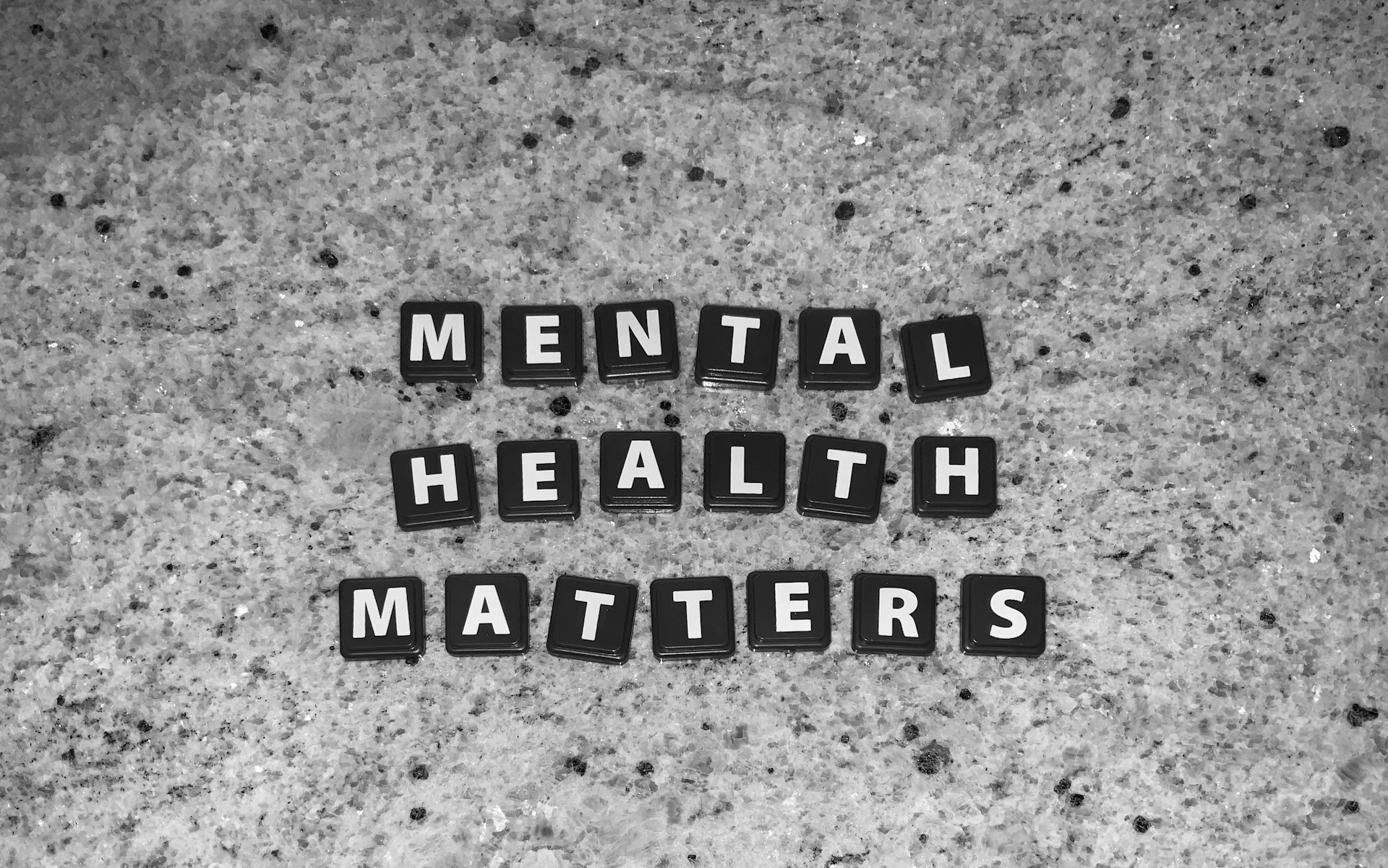
In the realm of survival, we often focus on the physical aspects: the gear, the skills, the terrain. Yet, one crucial element often overlooked is our mental health. As a seasoned survivalist and a licensed mental health therapist, I’ve experienced firsthand the importance of mental resilience in a crisis.
I recall an incident during my first exploration of Red Rock Canyon. The vast, humbling landscape was a sight to behold, but it was also a formidable challenge. Despite my preparations, I found myself lost on a wild game trail, far from the intended path.
“Okay, no big deal,” I reassured myself. “I’ll just retrace my steps.”
But the creeping sense of panic was undeniable. I was low on water, surrounded by thick brush, and far from any signal. It was in this moment that my mental health training became as crucial as my survival skills.
“If anyone can figure this out, I can.” I thought. Or rather, tried to convince myself….
The human brain has a built-in survival mechanism known as the fight-flight-freeze response. When faced with danger, our heart rate increases, our pupils dilate, and our breathing becomes rapid. While these physiological changes can enhance our strength and speed, they can also lead to panic attacks, which can be detrimental in a survival scenario.
Soldiers and first responders are trained to manage this response, and so can civilians. Understanding mental health first aid can be a lifesaver in personal emergencies or when trying to calm someone else in a crisis.
“Okay…” I thought, “let’s just backtrack a little. See if I can’t find the main trail.”
I remembered the acronym S.T.O.P., taught in wilderness survival classes: Sit, Think, Observe, Plan. I sat down, focused on my breathing, and began to regain control of my racing thoughts.
“Breathe.” I thought. “In through the nose, slow. SLOW. Hold it for a few seconds. Now release through the mouth even slower. Pause. Repeat.”
I knew I had to control my thoughts to improve my feelings and make good decisions. Catastrophic thinking like “I’m gonna die” or “What if a rattlesnake bites me?” could trigger panic mode.
“Okay, what do we know?” I thought. “I know I can’t be too far off-course, no more than a couple miles. I know a few people knew generally where I was going (but not the specific trailhead) and that I expected to be back by nightfall. I know I have survival training and some kit with me that would help me make it through the night if needed. I can do this.”
After observing my surroundings and assessing my resources, I made a plan. I decided to head in the direction of what I believed to be a road, using a large branch to tap the ground in front of me to ward off any potential rattlesnakes.
In the end, I made it back to my vehicle without having to spend the night in the desert. The experience was a stark reminder of the importance of mental health in survival situations.
In the aftermath of a crisis, people will be in panic mode. Knowing how to guide someone through the stresses of a crisis can help mitigate some of the negative effects of traumatic events.
First, ensure the scene is safe. Then, assess the group, find helpers, and triage the situation. Ground the person by asking them to describe their surroundings and their feelings. Encourage slow, deliberate breathing and validate their experiences.
Long-term effects of repeated activation of the fight-flight-freeze response can include panic attacks, nightmares, and flashbacks. If you’re prone to these symptoms and find the techniques described here aren’t helping, consider seeking help from a licensed therapist.
Remember, it’s not a matter of being weak or strong. Some of the bravest individuals I’ve worked with have sought therapy for their symptoms. It takes great strength and bravery to ask for help.
Since my experience in Red Rock Canyon, I’ve incorporated mental health first aid and awareness into my survival teachings. I’ve also adjusted my approach to hiking, ensuring I communicate my exact route and expected return time, carry more water, and stay focused on the trail.
Survival isn’t just about the physical. It’s about the mental too. And with the right skills and mindset, we can navigate any crisis with resilience.
Our Thoughts
This compelling account underscores the often overlooked but critical role mental health plays in survival scenarios. The author’s experience in Red Rock Canyon drives home the importance of not just physical preparation, but mental preparedness as well.
The fight-flight-freeze response, while instinctual, can be detrimental if not properly managed. As survivalists, we should heed the author’s advice and learn to control this response, much like soldiers and first responders are trained to do.
The S.T.O.P. method is a useful tool in regaining control of our thoughts and feelings in high-stress situations. It’s not just about physical survival skills, it’s about mental resilience and clarity of thought.
Moreover, the importance of understanding mental health first aid cannot be overstated. It can be a lifesaver, not just for ourselves, but for others in crisis.
Ultimately, the author’s story is a reminder that survival isn’t just about the gear, the terrain, or the skills — it’s about the mind too. And in the face of adversity, with the right mindset, we can navigate through any crisis with resilience.
Let us know what you think, please share your thoughts in the comments below.
-
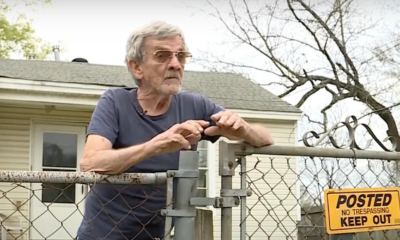
 Tactical1 year ago
Tactical1 year ago70-Year-Old Fends Off Intruder with Lead-Powered Message
-
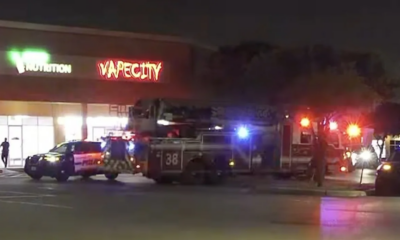
 Tactical1 year ago
Tactical1 year agoVape Shop Employee Confronts Armed Crooks, Sends Them Running
-

 Preparedness11 months ago
Preparedness11 months agoEx-Ballerina’s Guilty Verdict Sends Tremors Through Gun-Owner Community
-

 Preparedness9 months ago
Preparedness9 months agoGood Samaritan Saves Trooper in Harrowing Interstate Confrontation
-
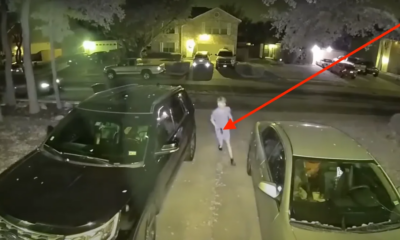
 Tactical1 year ago
Tactical1 year agoMidnight SUV Theft Interrupted by Armed Homeowner’s Retaliation
-
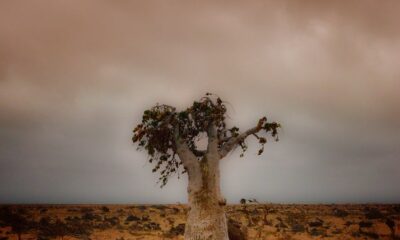
 Survival Stories2 years ago
Survival Stories2 years agoEmily’s 30-Day Experience of Being Stranded on a Desert Island
-

 Preparedness10 months ago
Preparedness10 months agoArizona Engineer’s Headless Body Found in Desert: Friend Charged
-

 Preparedness10 months ago
Preparedness10 months agoBoy Saves Dad from Bear Attack with One Perfect Shot
Estella
March 11, 2024 at 3:26 pm
Miracle God was with him all the way Jesus n the Holy Spirit all 3 in one guided him a huge Miracle how mysterious God works in a human HEART AMEN GOD This man’s story brought me closer to GOD